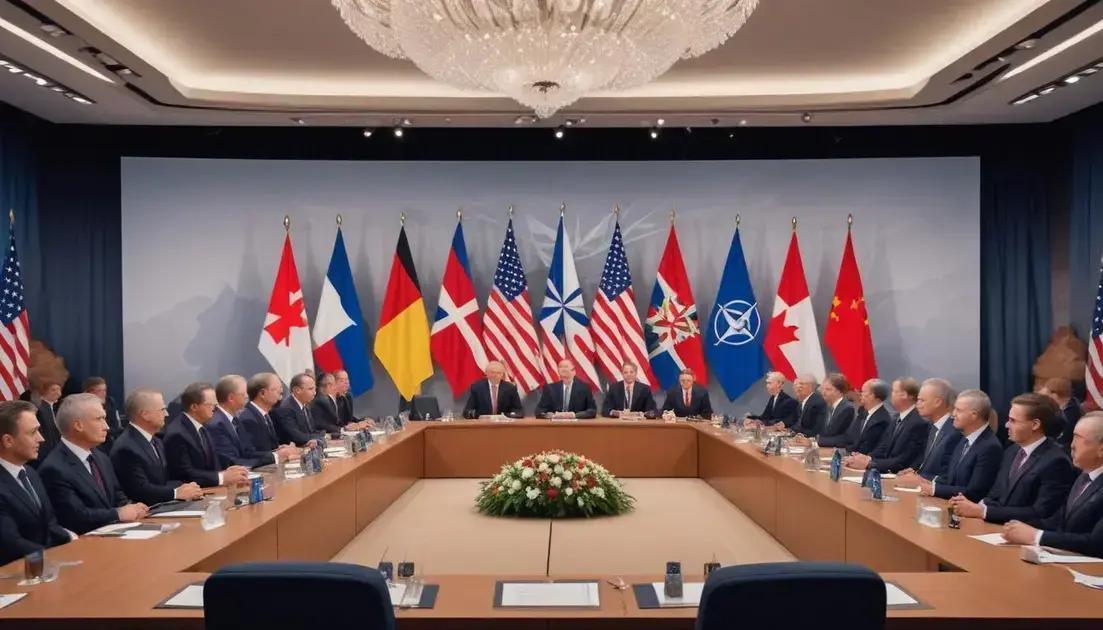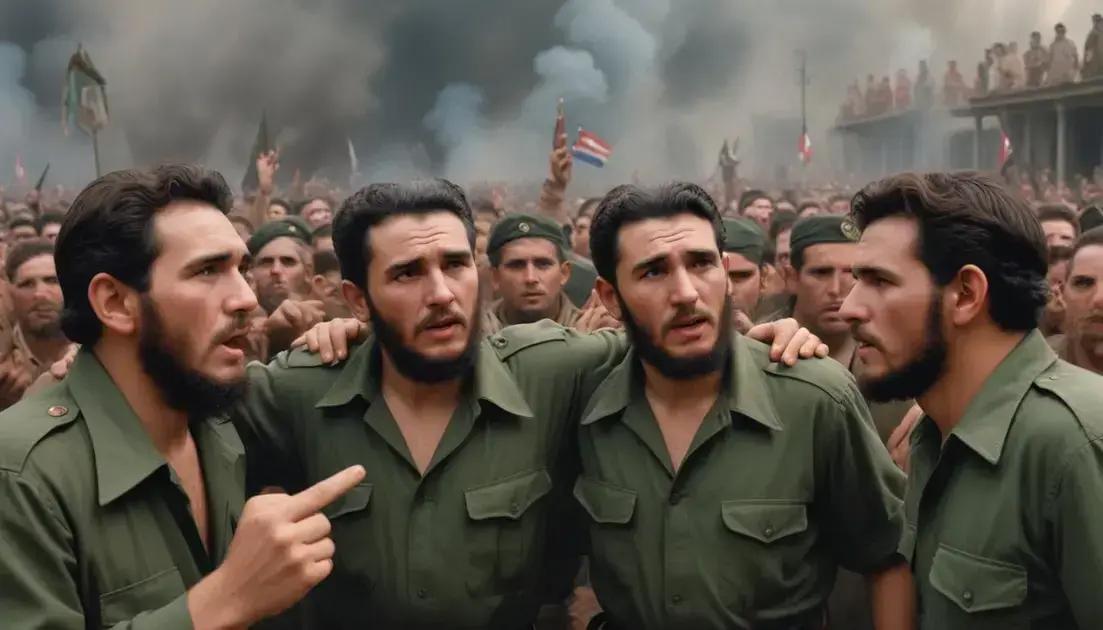
The Warsaw Pact: the Eastern response to NATO
The Warsaw Pact was a military alliance formed in 1955 among Eastern Bloc countries to counter NATO. It played a key role during the Cold War, fostering unity among its members and influencing military strategies. The pact ultimately dissolved in 1991, coinciding with the end of communism in Eastern Europe. Its legacy continues to impact modern diplomatic relations and security discussions in Europe.
Warsaw Pact represents a significant chapter in the Cold War narrative, showcasing how alliances shape political landscapes.
Historical Context of the Warsaw Pact
The Warsaw Pact was formed in 1955 in response to NATO. It was a military alliance of Eastern Bloc countries. These countries united for defense purposes against the West. The pact included nations like the Soviet Union, Poland, Romania, and East Germany.
During the Cold War, tensions ran high between the two sides. The Warsaw Pact aimed to strengthen military cooperation among its members. Leaders believed it was crucial for protecting communist interests.
As NATO expanded, the Warsaw Pact sought to showcase unity and military strength. Joint military exercises and maneuvers were common. This created an environment of fear and mistrust in Europe.
The political climate in Eastern Europe was essential for the pact’s existence. Each country faced its challenges, yet they stood together under Soviet leadership. This collective defense strategy was key to their military policies.
The Warsaw Pact also fostered a culture of surveillance and control among its members. Each nation kept a close eye on its citizens and neighbors. Despite this, it was seen as a necessary evil to maintain order and stability in a chaotic world.
Key Events Leading to the Warsaw Pact Formation
The formation of the Warsaw Pact resulted from historical events. After World War II, Europe was divided into two ideological camps. The West favored democracy and capitalism, while the East embraced communism.
Warsaw Pact members felt threatened by NATO’s presence. The fear of military aggression from the West pushed them closer together. Thus, the alliance formed to counterbalance NATO’s influence.
Formation of the Pact
The formation of the Warsaw Pact took place in 1955, amid rising tensions in Europe. It was a direct response to NATO’s establishment just a year earlier. This pact united several Eastern European countries under Soviet leadership.
The main goal of this alliance was to ensure mutual defense against threats from the West. Countries like Poland, Hungary, and Czechoslovakia joined to strengthen their positions. Each member shared a commitment to support one another in case of an attack.
Political pressure from the Soviet Union played a vital role in the pact’s creation. The USSR wanted to maintain control over Eastern Europe. Hosting the conference in Warsaw allowed leaders to showcase their unity.
During the signing, leaders agreed to a common military strategy. They decided to coordinate their armed forces to create a stronger stance. This coordination aimed to balance NATO’s military power and deter aggression.
Overall, the Warsaw Pact not only reflected military needs but also political dynamics. It symbolized the split between the East and West during the Cold War. The alliance pointed to deep-seated fears and rivalries that defined this era.
Key Events during the Cold War
The Cold War was filled with crucial events that shaped world history. It began after World War II and lasted for decades. Tensions between the United States and the Soviet Union dominated this period.
One major event was the Berlin Blockade in 1948. The Soviets stopped all access to West Berlin. In response, the U.S. and its allies initiated the Berlin Airlift. They flew in supplies to support the people of West Berlin.
In 1950, the Korean War broke out. North Korea, backed by the USSR, invaded South Korea. This conflict drew the U.S. into the fight, illustrating the global reach of Cold War tensions. The war ended in a stalemate, with Korea still divided.
The Cuban Missile Crisis in 1962 was another critical moment. The U.S. discovered Soviet missiles in Cuba, just 90 miles away. This standoff brought both nations to the brink of nuclear war. Thankfully, diplomacy resolved the crisis, but it heightened fears worldwide.
Additionally, the Vietnam War showcased Cold War tensions on a different front. The U.S. aimed to stop the spread of communism in Southeast Asia. Despite heavy involvement, the war ended with North Vietnam’s victory in 1975.
End of the Warsaw Pact
The Warsaw Pact officially ended in 1991. This marked a significant moment in history. The end was largely due to the collapse of communist regimes in Eastern Europe.
In the late 1980s, countries like Poland and Hungary began to push for reform. People wanted more freedom and less control. These movements weakened the Soviet grip on Eastern Europe.
In 1989, the Berlin Wall fell, symbolizing the end of division in Europe. This event encouraged other nations to leave the pact. By 1990, Czechoslovakia, Bulgaria, and others announced their withdrawal.
Finally, in July 1991, the remaining members officially dissolved the pact. The leaders recognized that the alliance was no longer relevant. With the Soviet Union’s fall, the pact’s military purpose vanished.
The end of the Warsaw Pact reshaped Europe and changed international relations. It marked the decline of Soviet influence and the rise of new democracies. Countries began to seek closer ties with the West and pursued NATO membership.
Legacy and Impact of the Pact
The Warsaw Pact left a lasting legacy in global politics and security. Even after its dissolution, the impact can still be seen today. The pact shaped the military and political landscape of Europe during the Cold War.
One key aspect of the pact’s legacy is the strengthening of Eastern Bloc countries. It fostered a sense of unity among its members. This cooperation set a precedent for future alliances, even beyond the Cold War.
Additionally, the Warsaw Pact influenced NATO’s development. The creation of opposing military alliances led to an arms race. Both sides felt the pressure to build stronger forces, impacting defense strategies for decades.
The end of the pact also marked a turning point in European relations. Eastern European countries moved toward democracy. Many sought memberships in NATO and the European Union, redefining their roles on the world stage.
Today, the memory of the Warsaw Pact remains important in discussions of security and diplomacy. Analyzing its impact helps us understand current international relations. It serves as a reminder of how alliances can shape our world.
Conclusion
In conclusion, the Warsaw Pact played a crucial role in shaping the Cold War era. Its influence on military strategy and political alliances was significant. The pact not only unified Eastern Bloc countries but also created a counterbalance to NATO.
The end of the Warsaw Pact marked a major shift in Europe. Countries moved away from communism and sought democratic governance. This transition helped redefine international relations and led to a more integrated Europe.
Today, the legacy of the Warsaw Pact still impacts security discussions. Understanding its history allows us to better navigate modern global issues. By learning from the past, we can work toward a more peaceful and cooperative future.


